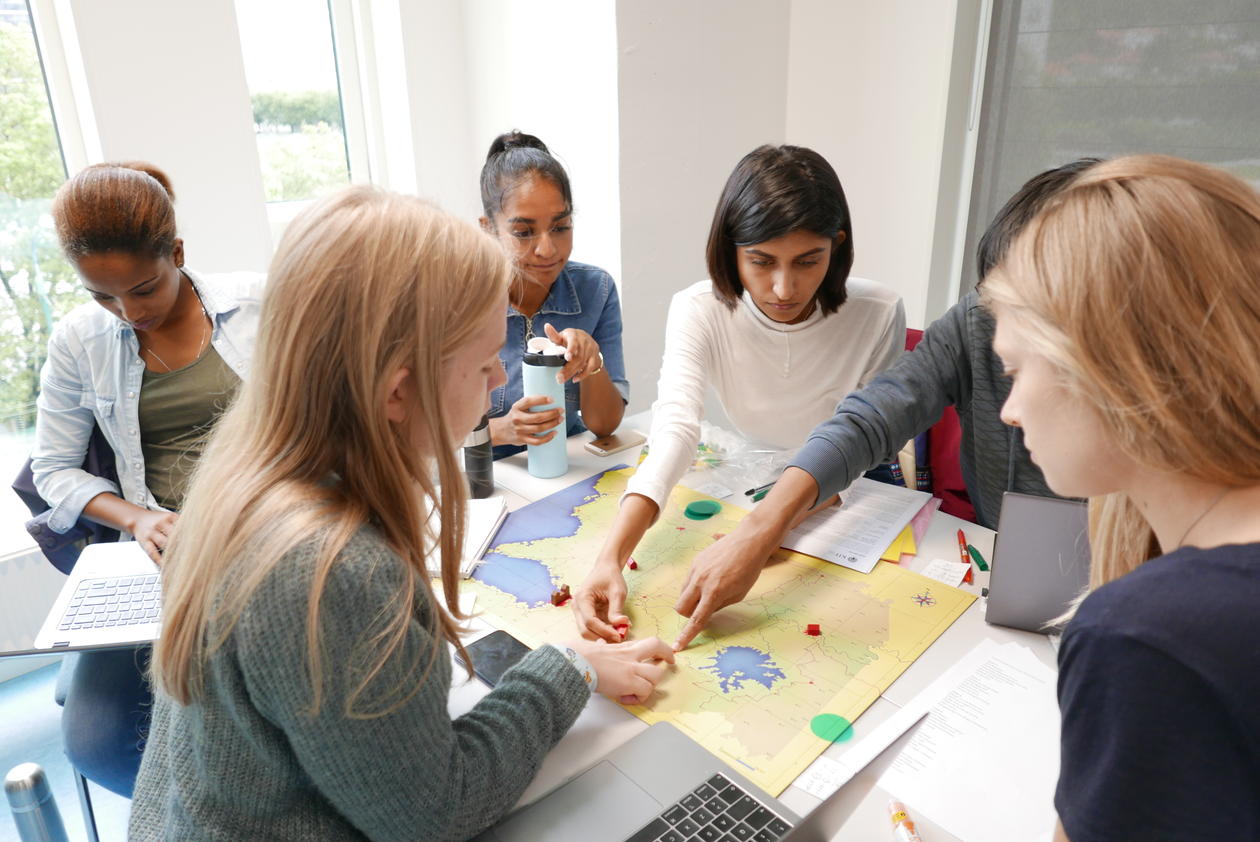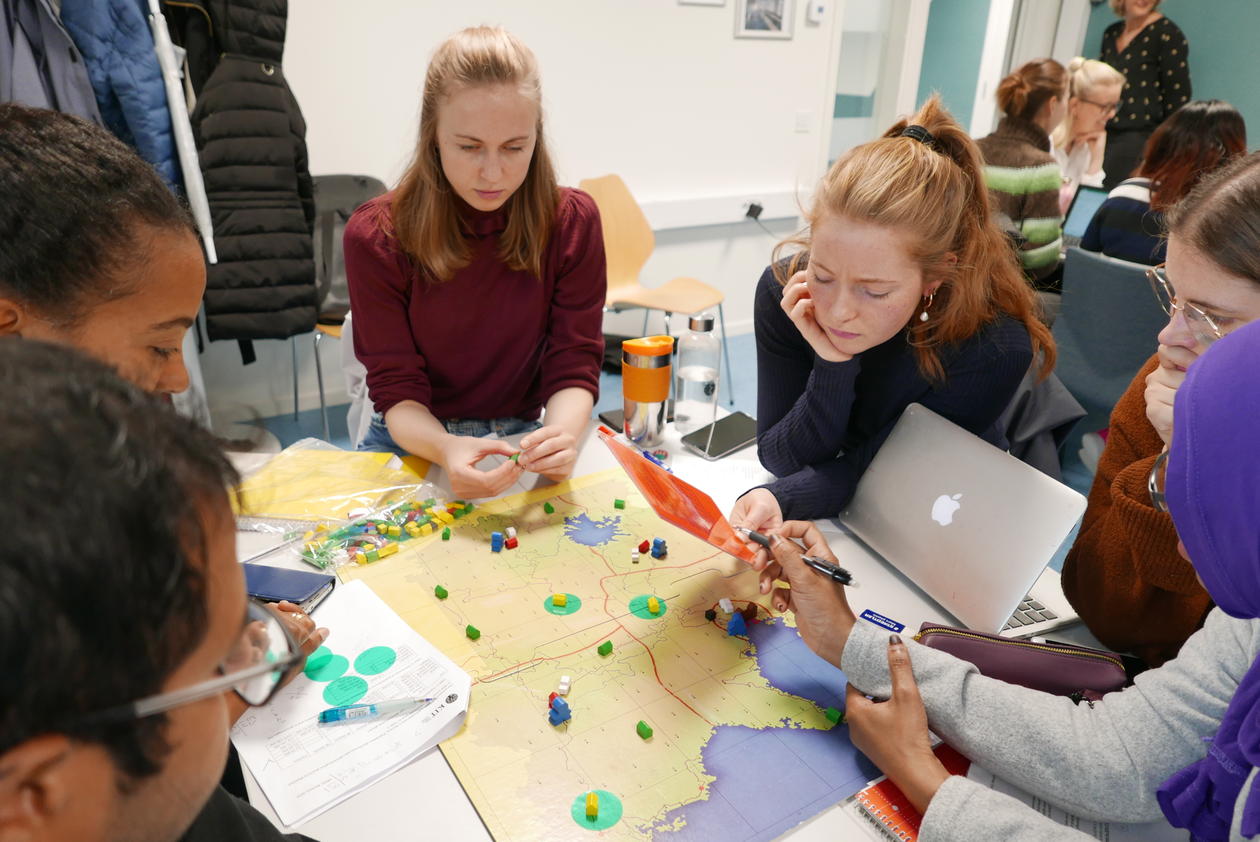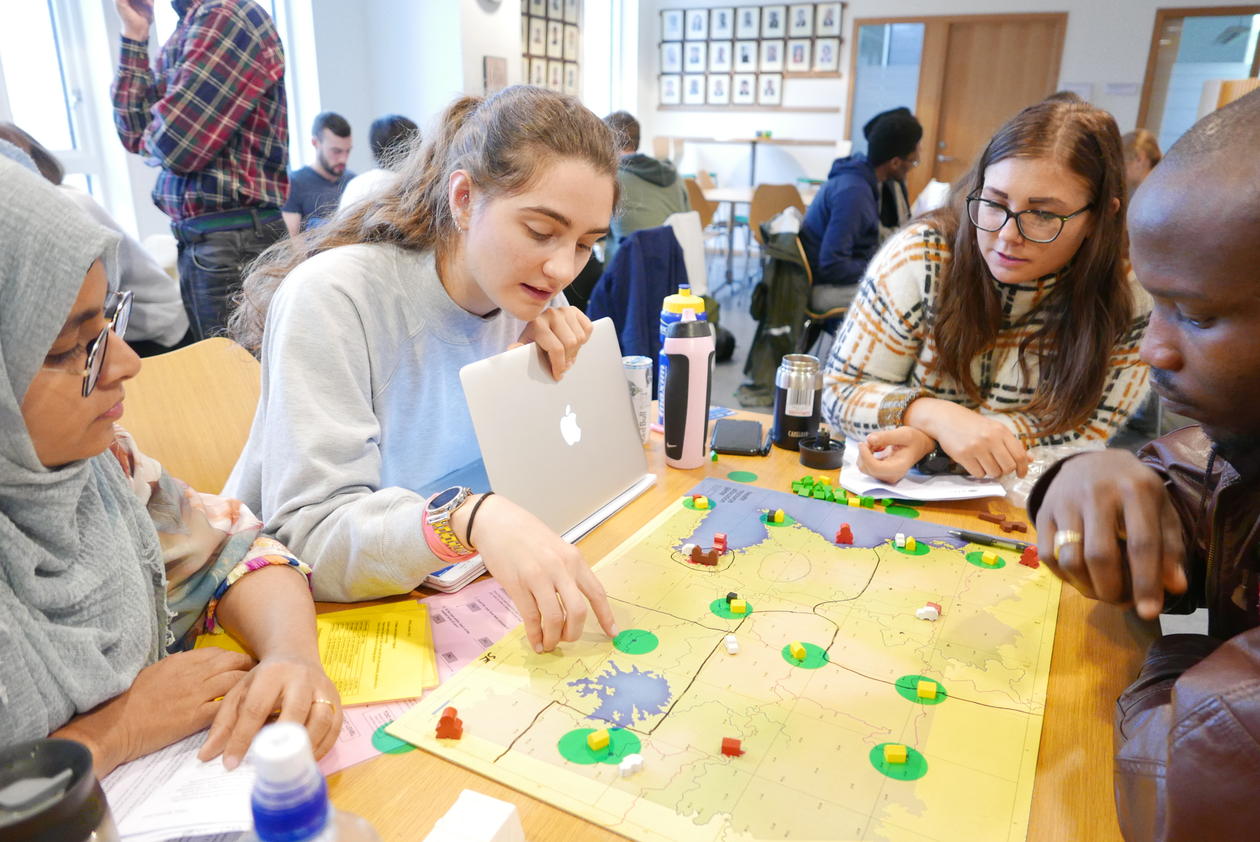Making your own health system – it is not as easy as it might look!
What if it was up to you to restore the health system to a war-ravaged country that has finally achieved peace? How would you prioritise and allocate resources within a limited budget? What infrastructures would you build and where? What programmes would you implement?
Bergen School of Global Studies_Health Resource Allocation Game-4K
Hovedinnhold
Navigating complex decision-making processes
Students enrolled in CIH’s Master Programme in Global Health were divided into groups to play a simulation board game that recreates a health system planning exercise for a hypothetical province in a fictitious country.
The Health Resource Allocation Game was developed at the Royal Tropical Institute (KIT) in Amsterdam more than 40 years ago. It has been updated continually and has been used at public health training institutions around the world.
Health system strengthening
The main goal of the game is to provide students with better understanding of the complex decision-making and priority-setting processes involved in building and strengthening health systems. Each group of students becomes a health management team. In the third phase of the game, students compare and contrast the systems developed by the different teams. In addition, the students playing the accounting role also rotate through different groups to “audit” the hypothetical systems. Not only do they experience another group’s decision-making processes, but this also ensures a degree of “honesty” in the solutions.
Among other things, the game stimulates teamwork skills, strengthens understanding of the multi-level factors driving decision-making, and encourages reflection over alternate decision-making strategies. It is learning by doing. The aim is not to win, but to engage in “realistic” discussions about these very complex issues, and to thereby build greater understanding of the enormous challenges involved.
Testing the hypothetical systems on “real” patients
After the first and longest “Planning” phase of the game, the students play the “implementation” phase. Here they draw cards representing “real” patients (or patient groups weighted by global burden of disease data) to test how their system manages patient care. For example, a given condition may be frequently encountered (data from the global burden of disease), so the card for the patient(s) with this condition may actually be weighted to represent 5 or 50 or even 300 patients.
The outcomes are “scored” on a roster that rates each system’s performance on a variety of factors including prevention, failures (due to too little or too late, or too expensive), and cures (rated as being either appropriate or more treatment than necessary).
Reflecting and evaluating
Together the student groups calculate the success / failure rates for the different systems, compare the different strategies and outcomes, and review the experience. Playing the Health Resource Allocation Game is an intense 2-day experience, which ensures that students engage in active, hands-on learning about the complex decision-making and priority-assessing processes involved in health system design and implementation.



